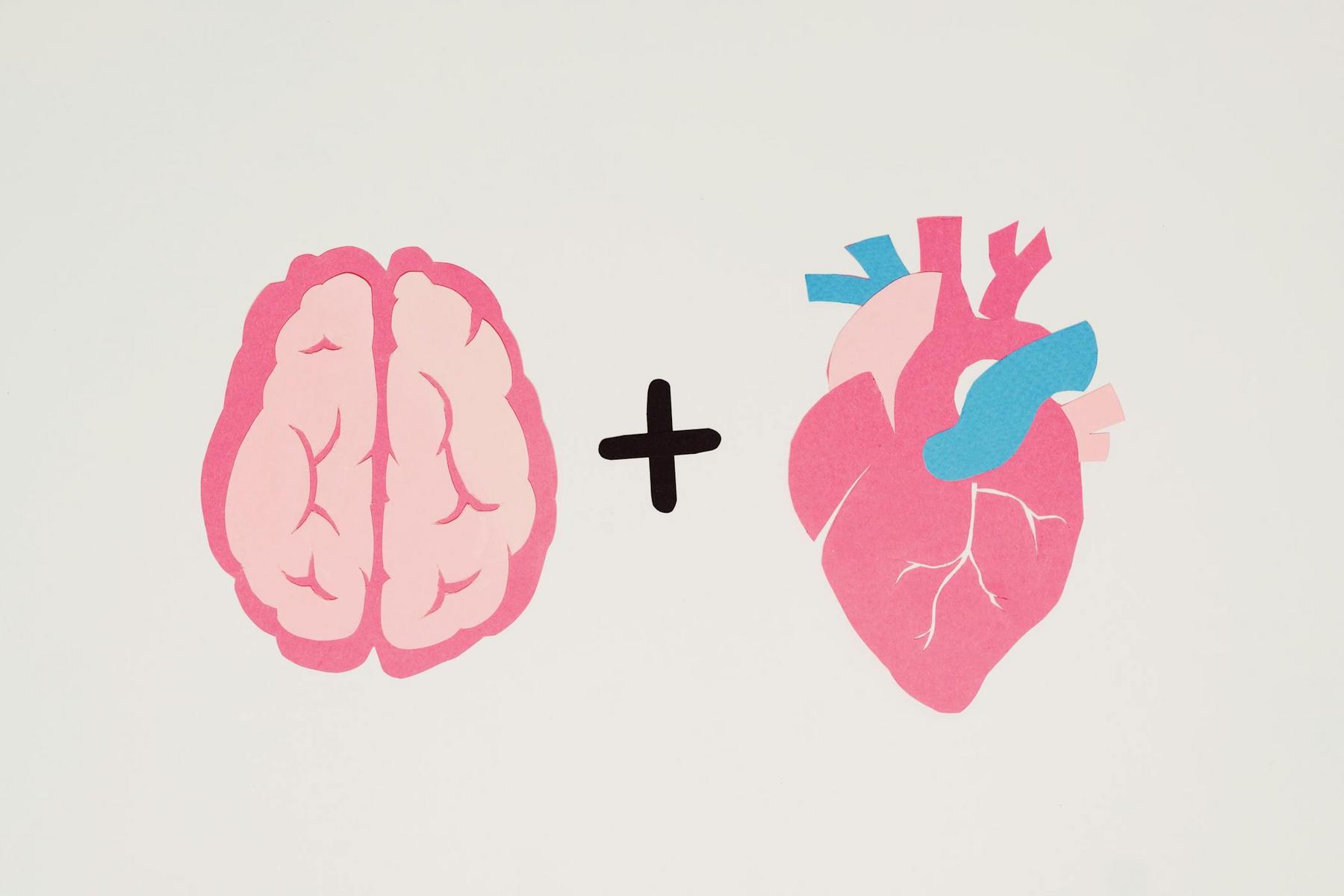Every night, millions of Australians enter into one of the most complex and fascinating biological processes known to science – sleep. Yet despite spending approximately one-third of our lives in this state, many people remain unaware of the intricate architecture that unfolds during those precious hours of rest. Sleep is far from a uniform period of unconsciousness; instead, it represents a sophisticated sequence of distinct stages that cycle throughout the night, each serving critical functions for physical restoration, cognitive processing, and emotional regulation. Understanding sleep stages and their unique patterns becomes increasingly important as modern lifestyle factors continue to disrupt natural Sleep architecture, leading to widespread sleep disorders and their associated health consequences across Australian communities.
The remarkable choreography of sleep stages reveals itself through measurable changes in brain activity, muscle tension, eye movements, and physiological processes that occur in predictable patterns throughout the night. These sleep stages work together in carefully orchestrated cycles, with each stage contributing specific benefits that cannot be replicated through any other biological process. From the light transitional phases that ease us into deeper rest, to the profound restorative processes occurring during slow-wave sleep, and finally to the neurologically active periods where dreams unfold and memories consolidate, each component of sleep architecture serves an indispensable purpose in maintaining optimal human health and performance.
What Are the Different Sleep Stages and How Do They Work?
Sleep architecture consists of two primary categories: Non-Rapid Eye Movement (NREM) sleep and Rapid Eye Movement (REM) sleep, which together form the foundation of restorative rest. NREM sleep comprises approximately 75% of total sleep time and is further divided into three distinct stages, each characterised by progressively deeper levels of unconsciousness and specific brain wave patterns. Stage 1 NREM represents the lightest phase of sleep, serving as a transitional bridge between wakefulness and deeper sleep states, typically lasting only 5-10 minutes per cycle.
Stage 2 NREM sleep accounts for the largest portion of total sleep time, approximately 45-50%, and is distinguished by characteristic brain wave patterns called sleep spindles and K-complexes. These unique electrical signatures help maintain sleep continuity while facilitating important memory consolidation processes. During this stage, heart rate and breathing become more regular, body temperature drops, and the brain begins filtering sensory information more effectively.
Stage 3 NREM sleep, often called slow-wave sleep or deep sleep, represents the most restorative phase of the sleep cycle, accounting for roughly 15-25% of total sleep time in healthy adults. This stage is characterised by the slowest brain waves, called delta waves, and is when the most critical restoration processes occur, including tissue repair, immune system strengthening, and memory consolidation.
| Sleep Stage | Duration (% of total sleep) | Brain Wave Frequency | Primary Functions |
|---|---|---|---|
| Stage 1 NREM | 5-10% | 4-8 Hz (Theta) | Transition, light sleep |
| Stage 2 NREM | 45-50% | Mixed with sleep spindles | Memory consolidation, maintenance |
| Stage 3 NREM | 15-25% | <4 Hz (Delta) | Physical restoration, deep recovery |
| REM Sleep | 20-25% | 13-30 Hz (Beta/Gamma) | Emotional processing, vivid dreams |
REM sleep typically begins approximately 90 minutes after sleep onset and is characterised by rapid eye movements beneath closed eyelids, intense brain activity similar to wakefulness, and temporary muscle paralysis that prevents physical movement during dreams. REM periods become longer and more frequent during the latter part of the night, with the final REM periods sometimes lasting up to an hour.
The progression through these sleep stages follows a predictable pattern, with complete sleep cycles lasting approximately 90-110 minutes. Most individuals experience four to six complete cycles per night, though the composition of each cycle changes dramatically throughout the sleep period, with early cycles containing more deep sleep and later cycles emphasising REM sleep.
How Do Sleep Stages Support Physical Health and Recovery?
The physical restoration that occurs during different sleep stages represents some of the most crucial biological processes for maintaining optimal health and longevity. Deep NREM sleep, in particular, serves as the body’s primary recovery period, when growth hormone secretion reaches its peak levels. This natural hormone surge stimulates protein synthesis, promotes tissue repair, and supports cellular regeneration throughout the body, making deep sleep essential for physical recovery from daily activities, exercise, and injury.
During slow-wave sleep, the body’s cardiovascular system experiences significant changes that support heart health and blood pressure regulation. Heart rate and blood pressure drop to their lowest levels of the night, providing a period of reduced cardiovascular stress that may help protect against heart disease and stroke. The regular occurrence of this nightly cardiovascular recovery period is considered crucial for maintaining long-term heart health.
The immune system undergoes remarkable transformations during deep sleep stages, with enhanced production and activity of infection-fighting cells. T-cells migrate more effectively to lymph nodes during deep sleep, where they form stronger immunological memories and prepare more effectively for future pathogen encounters. This immune enhancement during sleep helps explain why adequate rest is so important for fighting off infections and maintaining resistance to illness.
One of the most significant discoveries in sleep research has been the identification of the brain’s waste clearance system, known as the glymphatic system, which becomes dramatically more active during deep NREM sleep. Brain cells actually shrink during deep sleep, creating more space for cerebrospinal fluid to flow through brain tissue and remove metabolic waste products that accumulate during waking hours. This cleaning process is particularly effective at removing potentially harmful proteins associated with neurodegenerative diseases, making deep sleep crucial for long-term brain health.
Cellular repair mechanisms operate at peak efficiency during deep sleep stages, with enhanced DNA repair, cellular autophagy, and the removal of damaged cellular components. These processes help prevent the accumulation of molecular damage that can contribute to aging and disease, making quality sleep a critical factor in healthy aging and longevity.
What Role Do Sleep Stages Play in Memory and Cognitive Function?
The relationship between sleep stages and cognitive function represents one of the most extensively studied aspects of sleep science, revealing that different stages serve distinct and complementary roles in memory processing and mental performance. NREM sleep, particularly the deeper stages, plays a crucial role in consolidating declarative memories – the facts, events, and explicit knowledge that we consciously recall. During slow-wave sleep, the brain actively replays neural activity patterns from waking hours, strengthening important memories while allowing less relevant information to fade.
The memory consolidation process during deep sleep involves sophisticated coordination between the hippocampus, where memories are temporarily stored, and the neocortex, where they become integrated into long-term memory networks. This transfer process is facilitated by the characteristic slow oscillations of deep sleep, which coordinate the timing of memory replay across different brain regions. Research has demonstrated that disruption of these slow waves significantly impairs memory formation, even when total sleep time remains adequate.
REM sleep contributes uniquely to cognitive function through its role in processing procedural memories, emotional experiences, and creative problem-solving. The intense brain activity during REM sleep, combined with reduced logical constraint from the prefrontal cortex, creates optimal conditions for discovering new connections between seemingly unrelated concepts. This creative function of REM sleep may help explain why many scientific discoveries and artistic innovations have emerged from dream experiences or immediately upon waking.
The emotional processing that occurs during REM sleep is particularly important for mental health and psychological resilience. During REM periods, the brain processes emotional experiences in a neurochemically distinct environment, with reduced stress hormone levels that may facilitate the emotional resolution of difficult experiences. This emotional memory processing helps regulate emotional responses and may contribute to psychological well-being and stress resilience.
Sleep stages also influence daytime cognitive performance in measurable ways, with adequate deep sleep being particularly important for attention, working memory, and executive function. The brain waste clearance functions of deep sleep directly support cognitive performance by removing metabolic byproducts that could impair neural function. Similarly, the memory consolidation functions of REM sleep ensure that newly learned information and skills are properly integrated and available for future use.
How Do Modern Lifestyle Factors Disrupt Natural Sleep Stage Patterns?
Contemporary Australian lifestyles present numerous challenges to natural sleep stage architecture, with technological, environmental, and social factors conspiring to disrupt the delicate balance of restorative sleep cycles. Light exposure represents perhaps the most significant modern disruption to sleep stages, particularly the blue light emission from smartphones, tablets, computers, and LED lighting that has become ubiquitous in evening hours. This artificial light exposure suppresses the natural production of melatonin, the hormone responsible for coordinating sleep timing and supporting the transition between sleep stages.
The irregular sleep schedules common in modern society, including shift work, social jet lag, and inconsistent bedtimes, significantly disrupt the circadian rhythms that coordinate sleep stage timing. When sleep occurs at inconsistent times, the natural progression through sleep stages becomes disrupted, often resulting in reduced deep sleep and altered REM sleep patterns. This disruption can persist even when total sleep time appears adequate, highlighting the importance of consistent sleep timing in addition to sleep duration.
Environmental factors in modern bedrooms often interfere with natural sleep stage progression, including temperature extremes, noise pollution, and electromagnetic interference from electronic devices. The ideal sleep environment maintains a cool temperature that supports the natural drop in core body temperature necessary for deep sleep, while excessive heat or cold can prevent the transition to deeper sleep stages and cause frequent awakenings that fragment sleep architecture.
Dietary patterns and substance use common in modern society can significantly alter sleep stage distribution throughout the night. Caffeine consumption, even many hours before bedtime, can reduce deep sleep and delay REM sleep onset. Late evening meals and alcohol consumption, while initially sedating, can cause sleep fragmentation and significantly reduce REM sleep during the latter part of the night, when REM periods would normally be longest and most important.
Chronic stress and anxiety, increasingly common in modern Australian society, can profoundly impact sleep stage architecture by maintaining elevated cortisol levels that interfere with the natural progression to deeper sleep stages. The hypervigilant state associated with chronic stress can prevent the neural relaxation necessary for slow-wave sleep and can increase the frequency of awakenings that fragment normal sleep cycles.
Physical inactivity, despite being associated with fatigue, can actually impair sleep stage quality by reducing the natural sleep drive that promotes deep sleep. Regular physical activity enhances slow-wave sleep and improves overall sleep architecture, while sedentary lifestyles may result in lighter, less restorative sleep with reduced time spent in the most beneficial sleep stages.
What Are the Health Consequences of Sleep Stage Disruption?
The disruption of normal sleep stage architecture carries profound consequences for both physical and mental health that extend far beyond simple daytime fatigue. Loss of deep NREM sleep has particularly severe implications for physical health, as this stage is when the most critical restorative processes occur. Chronic reduction in slow-wave sleep is associated with impaired immune function, increased susceptibility to infections, reduced tissue repair capabilities, and accelerated cellular aging processes.
The metabolic consequences of disrupted sleep stages are increasingly recognised as significant public health concerns. Inadequate deep sleep disrupts glucose metabolism, reduces insulin sensitivity, and increases the risk of type 2 diabetes and metabolic syndrome. The hormonal changes associated with poor sleep architecture, including reduced growth hormone secretion and altered cortisol patterns, can contribute to weight gain, muscle loss, and cardiovascular disease risk.
Cognitive consequences of sleep stage disruption include impaired attention, reduced working memory capacity, decreased executive function, and accelerated cognitive decline. The brain waste clearance functions that peak during deep sleep mean that chronic sleep architecture disruption may increase the risk of neurodegenerative diseases, including Alzheimer’s disease and other forms of dementia. Studies have shown associations between poor sleep quality and increased accumulation of toxic proteins in the brain that are characteristic of these conditions.
Mental health implications of disrupted REM sleep are particularly concerning, with REM sleep loss being strongly associated with depression, anxiety, and other mood disorders. The emotional processing functions of REM sleep mean that chronic REM deficiency can impair emotional regulation, increase emotional reactivity, and reduce resilience to psychological stress. These effects can create cycles where mental health problems further disrupt sleep, leading to progressive deterioration in both sleep quality and psychological well-being.
The immune system consequences of poor sleep stage architecture include increased susceptibility to infections, reduced vaccine effectiveness, and slower healing from injuries or illnesses. The enhanced immune function that occurs during deep sleep is essential for maintaining robust defences against pathogens, and disruption of this process can have immediate and long-term health implications.
Cardiovascular consequences of disrupted sleep stages include increased risk of hypertension, heart disease, and stroke. The natural blood pressure reduction that occurs during deep sleep provides important cardiovascular recovery, and individuals who fail to show this normal nocturnal dip in blood pressure have significantly increased cardiac risk.
How Can Sleep Stage Architecture Be Optimised for Better Health?
Optimising sleep stage architecture requires a comprehensive approach that addresses the multiple factors influencing sleep quality and timing. Sleep hygiene practices form the foundation of sleep stage optimisation, beginning with maintaining consistent sleep schedules that support natural circadian rhythms. Going to bed and waking at the same time every day, including weekends, helps synchronise the biological clock and promotes normal progression through sleep stages.
Creating an optimal sleep environment is crucial for supporting natural sleep stage architecture. The bedroom should be cool, dark, and quiet, with temperatures maintained between 15-19°C to support the natural drop in core body temperature that facilitates deep sleep. Blackout curtains or eye masks can help block disruptive light, while white noise machines or earplugs may help mask environmental sounds that could cause sleep fragmentation.
Light management represents one of the most powerful tools for optimising sleep stages, involving both maximising bright light exposure during daytime hours and minimising artificial light exposure in the evening. Seeking natural sunlight exposure, particularly in the morning, helps maintain healthy circadian rhythms and supports proper sleep stage timing. Conversely, using blue light filtering glasses or apps in the evening, and avoiding screens for at least an hour before bedtime, can help preserve natural melatonin production.
Physical activity plays an important role in promoting healthy sleep architecture, with regular exercise enhancing slow-wave sleep and improving overall sleep quality. However, the timing of exercise matters, with vigorous activity within 3-4 hours of bedtime potentially interfering with sleep onset and early sleep stages. Morning or afternoon exercise appears to be most beneficial for sleep stage optimisation.
Dietary considerations for sleep stage optimisation include avoiding large meals, caffeine, and alcohol close to bedtime, while ensuring adequate nutrition to support the body’s overnight repair processes. Foods rich in tryptophan, magnesium, and complex carbohydrates may support natural sleep processes, while maintaining stable blood sugar levels throughout the night can prevent sleep disruptions.
Stress management and relaxation techniques can significantly improve sleep stage architecture by promoting the neural relaxation necessary for transitioning to deeper sleep stages. Practices such as progressive muscle relaxation, deep breathing exercises, meditation, or gentle yoga can help activate the parasympathetic nervous system and prepare the body for restorative sleep.
Understanding Individual Variations in Sleep Stage Needs
Recognition of individual differences in sleep stage patterns and needs is crucial for developing personalised approaches to sleep optimisation. Chronotype, or natural preference for morning or evening activity, significantly influences optimal sleep timing and the distribution of sleep stages throughout the night. Understanding and accommodating individual chronotype differences can dramatically improve sleep quality and daytime functioning.
Age-related changes in sleep architecture are normal and expected, with older adults typically spending less time in deep sleep and experiencing more fragmented sleep patterns. However, maintaining good sleep hygiene and addressing underlying sleep disorders can help preserve sleep quality and minimise the negative health impacts of age-related sleep changes.
Genetic factors increasingly recognised as important influences on sleep patterns include variations in circadian rhythm genes, neurotransmitter metabolism, and sleep regulation mechanisms. While genetic testing for sleep-related variants is becoming more accessible, the practical applications of this information are still being developed and researched.
Individual health conditions, medication effects, and life circumstances all influence optimal sleep patterns and the most effective strategies for sleep stage optimisation. Working with healthcare providers to address underlying health issues and evaluate medication effects on sleep can be important components of comprehensive sleep improvement strategies.
The integration of sleep tracking technology is providing new insights into individual sleep patterns and responses to various optimisation strategies. While consumer sleep tracking devices may not provide the detailed accuracy of clinical sleep studies, they can offer valuable feedback about sleep consistency, duration, and responses to lifestyle changes.
Sleep stages represent a fundamental aspect of human biology that profoundly influences every aspect of health and well-being. The intricate architecture of NREM and REM sleep stages works together to provide comprehensive restoration for both brain and body, supporting everything from immune function and cellular repair to memory consolidation and emotional processing. Understanding these sleep stages and their critical functions provides essential knowledge for anyone seeking to optimise their health through better sleep.
The challenges posed by modern lifestyle factors to natural sleep stage architecture highlight the importance of intentional sleep optimisation strategies that address multiple domains of sleep health. From managing light exposure and maintaining consistent schedules to creating optimal sleep environments and addressing stress, a comprehensive approach to sleep hygiene can significantly improve sleep stage quality and distribution.
As sleep research continues to advance our understanding of sleep stage functions and regulation, the importance of prioritising sleep as a cornerstone of health becomes increasingly clear. The profound consequences of sleep stage disruption across multiple health domains underscore the critical need for both individual and public health initiatives that support healthy sleep architecture. By understanding and respecting the sophisticated biology of sleep stages, we can harness their remarkable restorative power to enhance health, performance, and quality of life.
Looking to discuss your health options? Speak to us and see if you’re eligible today.
How long should each sleep stage last during a normal night’s rest?
During a typical eight-hour sleep period, Stage 1 NREM should comprise 5-10% (24-48 minutes), Stage 2 NREM accounts for 45-50% (3.6-4 hours), Stage 3 NREM represents 15-25% (1.2-2 hours), and REM sleep makes up 20-25% (1.6-2 hours) of total sleep time. These percentages shift throughout the night, with more deep sleep occurring in the first half and more REM sleep in the second half.
What happens if I consistently don’t get enough deep sleep?
Chronic deep sleep deficiency can lead to impaired immune function, reduced growth hormone production, slower tissue repair, increased inflammation, impaired glucose metabolism, and accelerated aging processes. It may also contribute to increased risk of cardiovascular disease, diabetes, and neurodegenerative conditions, while affecting cognitive performance and emotional regulation.
Can you make up for lost REM sleep by sleeping longer?
While extended sleep periods may provide some additional REM sleep, the body cannot fully compensate for chronic REM sleep loss through occasional longer sleep sessions. REM sleep timing is strongly influenced by circadian rhythms, and the most beneficial REM sleep occurs during natural early morning hours. Consistent, adequate sleep is more effective than attempting to ‘catch up’ on lost sleep stages.
Why do sleep stages change as we age?
Aging naturally affects sleep architecture due to changes in hormone production, neurotransmitter function, and circadian rhythm regulation. Older adults typically spend less time in deep sleep, experience more sleep fragmentation, and may have altered REM sleep patterns. These changes reflect normal aging processes, though maintaining good sleep hygiene can help preserve sleep quality.
How can I tell if my sleep stages are disrupted without a sleep study?
While definitive assessment requires professional sleep testing, signs of disrupted sleep architecture include feeling unrefreshed despite adequate sleep duration, excessive daytime fatigue, difficulty concentrating, mood changes, frequent illnesses, and poor physical recovery. Consistent sleep timing, quality sleep hygiene, and addressing obvious sleep disruptors can help improve sleep stage architecture even without formal testing.













